Prices

May 30, 2018
Raw Material Prices: Scrap, Zinc, Iron Ore, Coke
Written by Peter Wright
The prices of coking coal and zinc declined in May, while iron ore FOB Australia’s East Coast and scrap priced in Chicago were unchanged.
To put this raw materials commentary into perspective, Figure 1 shows the spread between Chicago #1 busheling and hot rolled coil ex works Indiana through May 18, both in dollars per net ton. The spread at $546.25 is now higher than at any time since the bubble of Q3 2008 and has increased every month since September 2017 when it stood at $278.48.
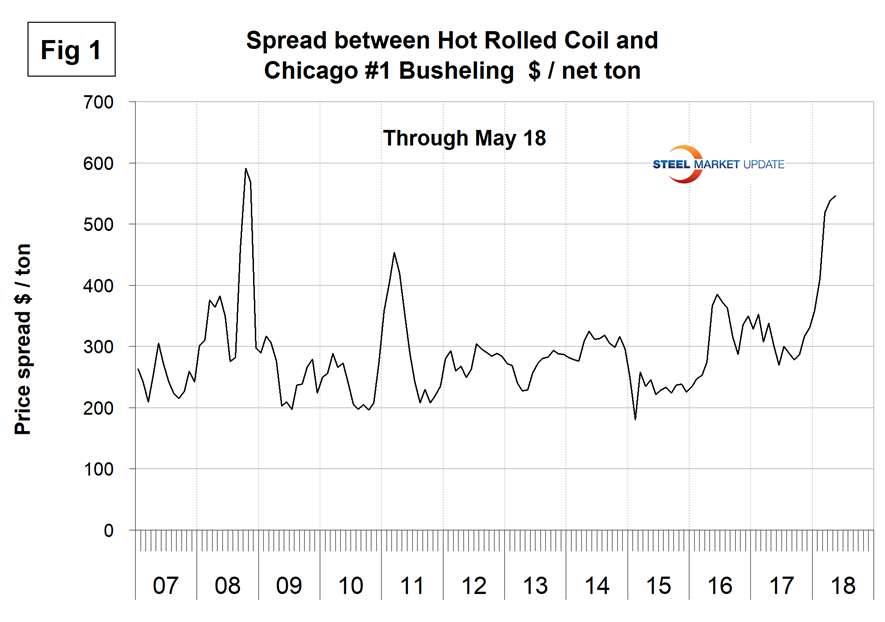
Scrap
Figure 2 shows the relationship between shredded and #1 busheling both priced in Chicago. In May, shredded was unchanged at $380 per gross ton, up from $275 in November 2017. Busheling was unchanged in January, February and March before rising $10 to $385 in April and again holding in May. The busheling premium was $5.00 in April and May, down from $77.50 in September last year.
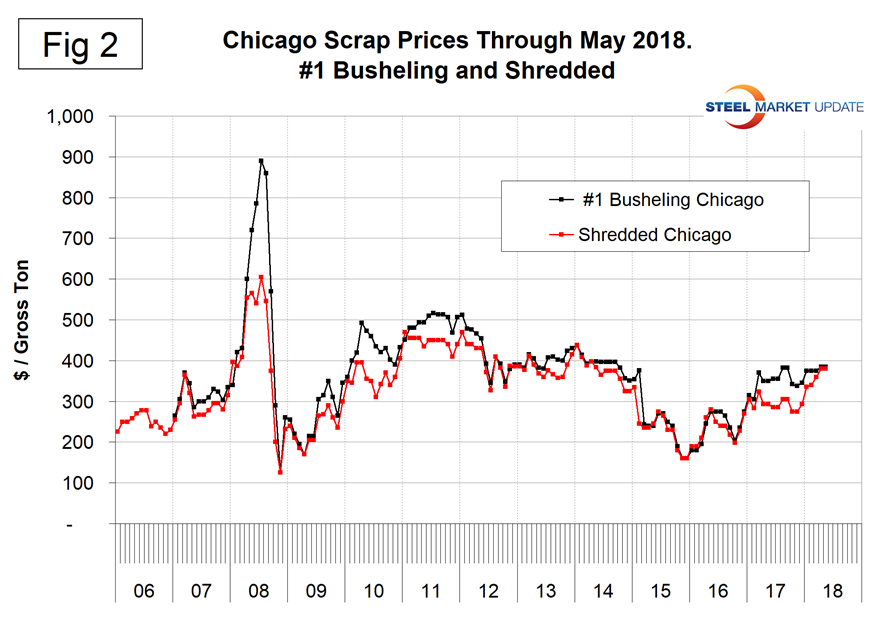
Figure 3 is a scatter gram of the price of Chicago shredded and the Broad Index value of the U.S. dollar as reported by the Federal Reserve. The latest data for the Broad Index is from April. This is a causal relationship with a correlation of over 86 percent.
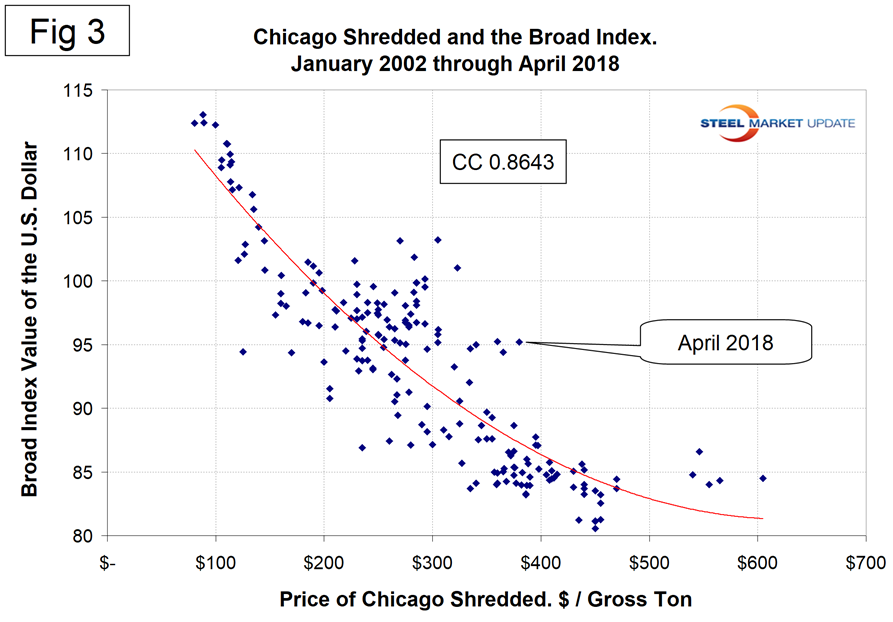
Iron Ore
On May 5, Mining.com reported: “BHP Billiton Ltd., the world’s biggest miner, forecasts that reforms in China’s steel sector will continue to hand an advantage to suppliers of higher-quality iron ore and coking coal as consumption of steel keeps growing well into the next decade. China’s reforms to its steel industry are shifting from a focus on removing capacity to upgrading operations,” according to BHP’s Balhuizen. “Meeting both emissions curbs and targets to lift longer-term utilization rates to 80 percent mean the sector will favor large, coastal mills using cleaner, premium steelmaking materials.”
Figure 4 shows the Platts IODEX of 62% Fe delivered North China since January 2009. The Index recovered to $92.30 on March 17, 2017, but declined to $64.50 by May 18, 2018.
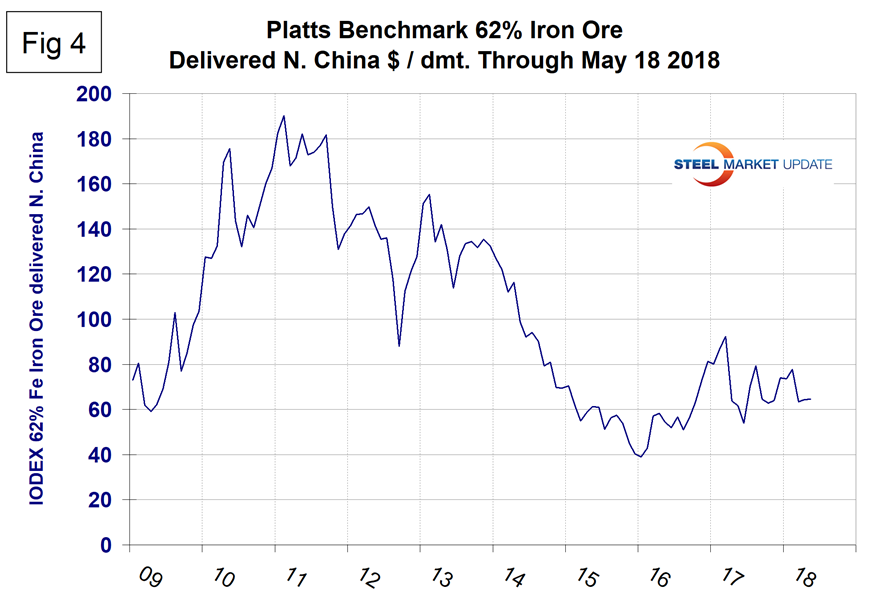
There is a long-term relationship between the prices of iron ore and scrap. Figure 5 shows the IODEX and the price of Chicago shredded through May 18.
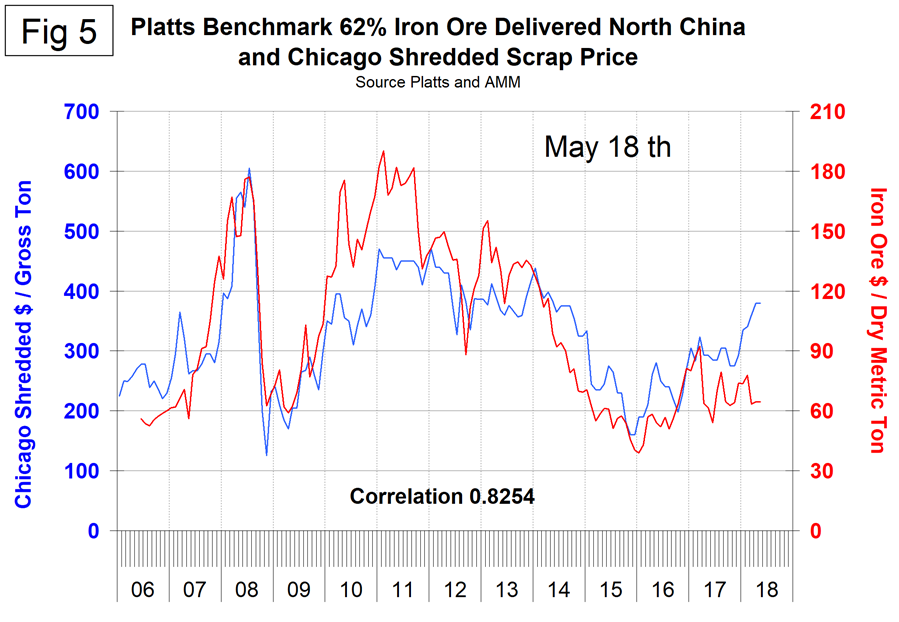
The correlation since January 2006 has been 82.54 percent. In the last 10 years, scrap in dollars per gross ton has been on average 3.4 times as expensive as ore in dollars per dry metric ton (dmt). The ratio has been erratic since mid-2014, but overall since then has benefited the integrated producers. In May, the ratio at 5.9 is the highest since our data stream began in January 2006 (Figure 6). Since Chinese steel manufacture is 95 percent BOF, this ratio has allowed them to be more competitive on the global steel market. In the last four years, there have been times when China could supply semi-finished to the global market at prices competitive with scrap.
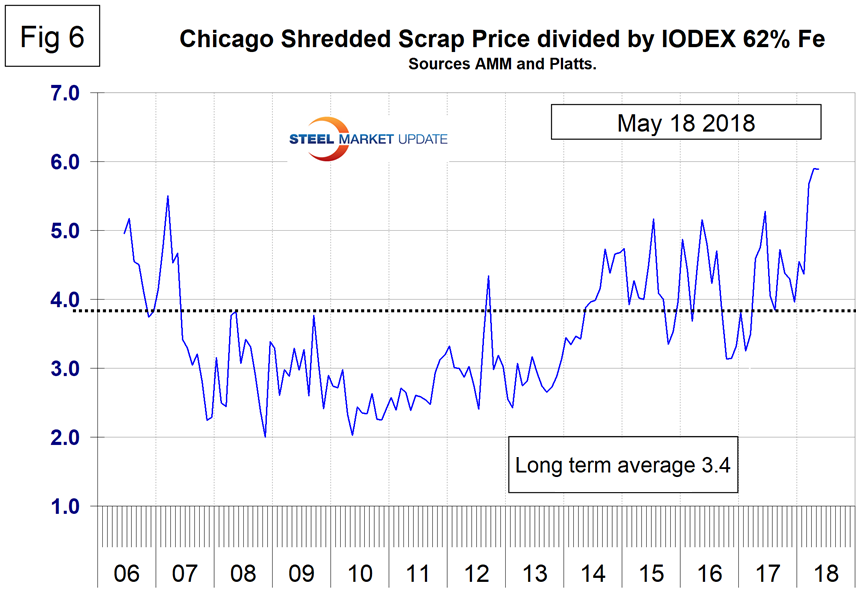
Coking Coal
Coking coal prices have been very erratic in the last 18 months. From mid-October 2017 to the end of December 2017, premium hard low volatile coking coal prices rose from $181.50 per metric ton to $262.25 FOB Australia’s East Coast (Figure 7). Since then, the price has declined to $184.75 on May 18.
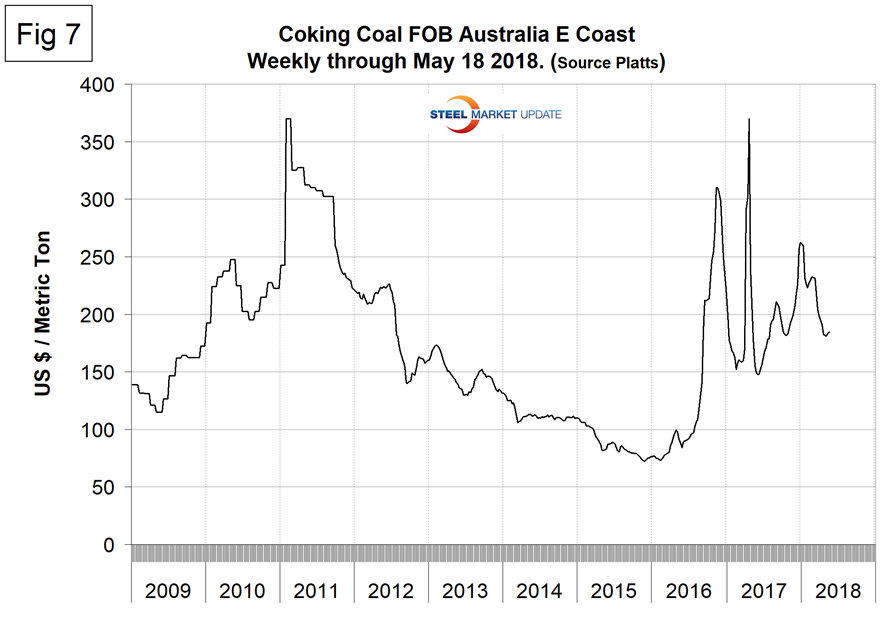
Zinc
Kitco publishes a daily spot price of zinc, which we have transcribed to Figure 8. Just as a point of reference, we have included aluminum in the same graph. The price of zinc on May 25 was $1.3813 per pound, down from a high of $1.6134 on Feb. 21.

We repeat here what we reproduced last month because it still seems pertinent. On March 29, Reuters reported that shortages of zinc after the closures in 2015 sent benchmark zinc metal prices on the London Metal Exchange soaring by 29 percent last year and they touched the highest in over a decade at $3,595.50 per metric ton last month. Since then, however, prices have slumped while inventories of metal on the LME and Shanghai Futures Exchange have climbed. While the industry consensus is for weaker prices next year, some analysts such as Max Layton at Citi expect one last burst of strength. “Zinc bull markets like this in the past haven’t lasted and this one won’t last,” Layton told the zinc conference, saying a final surge would take LME zinc to around $3,800-$4,000 a metric ton in the next several months, but then it would slump to around $2,500 in coming years. “The zinc price in the next three to six months is the best we’re going to see for the next three to five years.”

Zinc is the fourth most widely used metal in the world after iron, aluminum and copper. Its primary uses are 60 percent for galvanizing steel, 15 percent for zinc-based die castings and about 14 percent in the production of brass and bronze alloys, among other miscellaneous applications.
SMU Comment: There is an inverse relationship between commodity prices and the value of the U.S. dollar on the global currency markets. There has been a sharp reversal in the value of the dollar, which has strengthened by 6.04 percent since Feb. 1 (Figure 10). A rising dollar puts downward pressure on the price of those global commodities that are priced in dollars, as is clearly shown by the relationship between scrap and the dollar index described above.
FIG 10






